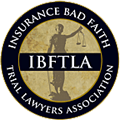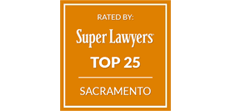Traumatic Brain Injury, Part 1: Lobes of the Brain
Traumatic brain injuries are often misunderstood. There are many different types of brain injury, and many different ways in which our brains can become injured. So what that means in terms of our lives – in terms of how we function as human beings, with our wives, with our friends, relatives and co-workers – varies from person to person.
Traumatic brain injury is a subject that I feel very strongly about. I have always taken great pride in representing clients who have suffered a traumatic brain injury. The purpose of this blog post, and a whole series of blog posts that I will be contributing here, is to bring a greater understanding of the brain, how it works, what happens when a person has a traumatic brain injury, and what can be done about it. The series will cover topics such as skills and functions of the different lobes of the brain; types of brain injury; causes and results of traumatic brain injury; red flags that suggest that there may be a brain injury; the subject of “Mild Traumatic Brain Injury” (MTBI), a horribly misnamed subject, because there is no such thing, really, as a mild brain injury; the associations between a traumatic brain injury and certain behaviors; the evaluation of brain injury, and lastly, we’ll discuss the treatment of options of patients with brain injuries.
Today’s post deals with the skills and functions associated with the lobes of the brain. The human brain is divided into different areas, known as “lobes.” There is the frontal lobe, the parietal lobe, temporal lobe, the occipital lobe, the cerebellum and the brainstem.
Associated with the frontal lobe are various controls. As with every other lobe in the brain, it controls certain behaviors, and when it is injured, that has certain consequences. The frontal lobe controls attention, motivation, emotional, social, and sexual control, and it controls verbal communication, our spontaneity, judgment, problem solving ability, our ability to make decisions, the way we use expressive language, motor integration, how we move our bodies, voluntary movement, and the way we sequence things.
You can see that the frontal lobe of the brain plays a very important role in determining the quality of our lives. Now, what happens when the frontal lobe of the brain is injured? The changes that occur when there is damage to the frontal lobe include problems with sequencing, severation (where there is difficulty making decisions), decreased attention, personality alterations, problem solving difficulties, a decrease in the ability to communicate verbally, a lack of spontaneity, rigidity or inflexible thinking.
Next we come to the temporal lobe. The temporal lobe has several very important functions. It controls short-term memory, receptive language, language comprehension, musical awareness, selective attention, our object categorization (the ability to locate objects), and, importantly, face recognition. The temporal lobe also controls behavior, in particular aggressive behavior and our ability to keep aggression in check. If you think about your own life, the things that you do and the way that you interact with people, you can see how the temporal lobe serves all of us a very important purpose. So what happens when our temporal lobe is damaged?
When the temporal lobe is injured, it creates problems understanding the spoken word. There are also problems with selective attention, and even sexuality changes. A person with a temporal lobe injury may be found to persistently talk, and often with a temporal lobe injury we see an increase in aggressive behavior. There may also be problems finding, identifying and categorizing objects and faces.
So now let’s talk a little bit about the parietal lobe. This area of the brain takes us into a higher level of functioning. As we use our brains for thought processing, different aspects of knowing where our bodies are in space and things of that nature, the parietal lobe steps in to provide the functionality to successfully execute those actions. In the parietal lobe, we have the control of what’s called “spatial orientation,” or being able to identify where our bodies are in space. We have control of the awareness of our bodies, and our various body parts (where our arms and legs are, and what they are doing). We have our tactile perception (what we feel in our fingertips). Our academic skills, how we achieve in school and in the workplace. Object naming – how we file and apply names to faces and objects. Visual attention – the way that we are able to focus visually. The distinction between right and left. And, very importantly, our hand-eye coordination.
As we look at the parietal lobe in terms of injury, we see patients who have difficulty naming objects. They have problems processing and understanding what their fingers are telling them they are touching. You see people’s academic skills fall, and things that they were usually able to do in the workplace from a cognitive standpoint are now diminished or gone. There is confusion between the left and the right. You have a loss of hand-eye coordination and the awareness of where we are in relation to others physically, where our bodies are in space.
So let’s now move on to the occipital lobe. The occipital lobe is another “high level function” area of the brain. It controls things like reading and visual processing. When the occipital lobe is damaged through a traumatic brain injury, we see issues of vision defects. There is loss of the visual field, problems visually locating objects and identifying colors. People can have distorted vision, hallucinations, and they can have something called “word blindness,” which is when a person may be able to identify letters but is unable to understand them in the context of certain words. And there is an overall slowed processing of the way that our brains process the movement of objects and other visual information.
Next we come to the cerebellum. Located near the base of the brain, the cerebellum is also a very high functioning part of the brain. As we look at the types of things that our Cerebellum does for us each and every day, we see things like the following: (1) the control of growth and fine motor coordination. (2) Our voluntary motor coordination. So when we decide we want to reach out and grab a jar off the shelf, we extend our arm and that’s our cerebellum in action. (3) Balance and equilibrium, the ability to stand up and not fall over, ride a skateboard, ride a bicycle, or go for a jog down the block. (4) Our postural control. The ability to stand up straight, and stay up right. And (5) our eye movements – moving our eyes back and forth and up and down, and utilizing our eyes to obtain visual information so that it can be processed by our brain.
Last but not least we come to the brain stem. The brain stem is an area of the brain that most people don’t fully understand. It controls what is called the “autonomic nervous system,” which are all the things in our bodies that we don’t purposefully control. For example, our heart rate, the rate that we breathe, how we sweat – all those body controls that occur without having to think about them. It controls the rate at which the heart beats, our ability to remain alert and our level of alertness. It regulates sleep and the ability to achieve deep REM sleep. It works in tandem with other areas of the brain that help control balance and movement. It allows us to swallow food and liquid, directing it through our esophagus to our stomach, and beyond. So our brain stem controls so many of the different functions that allow us to survive as human beings. This is an area of the brain that we take for granted, and don’t realize the importance of a healthy brain stem until we become injured.
When a person suffers an injury to their brain stem, you see a damaged regulation of body temperature. We can lose the efficient management of our heart rate, or the rate at which we breathe. People with injuries to their brain stem also experience problems balance and movement, they have problems swallowing food and liquid. Brain stem injuries classically can be associated with symptoms of vertigo, where the world spins, often uncontrollably. There is dizziness and nausea. A brain stem injury is a truly horrible injury.
We have now had an opportunity talk about the different lobes of the brain and what they control in terms of each of our lives. When any of the lobes of our brain is damaged or injured by an accident, by another driver, by a drug, or by a doctor, there are traumatic consequences that affect our lives a myriad of ways.
I sincerely hope you have enjoyed this post, and if you’d like to hear this topic via podcast, you can hear the audio version at our KCRLegal Personal Injury Podcast. Please tune in and give us your feed back, and I hope you find all of this information helpful. And for more information about Traumatic Brain Injury, its causes, its affects, and the different ways to treat and deal with it, please visit our Traumatic Brain Injury Resource Center at https://www.ericratinoff.com/brain-injury/.

















